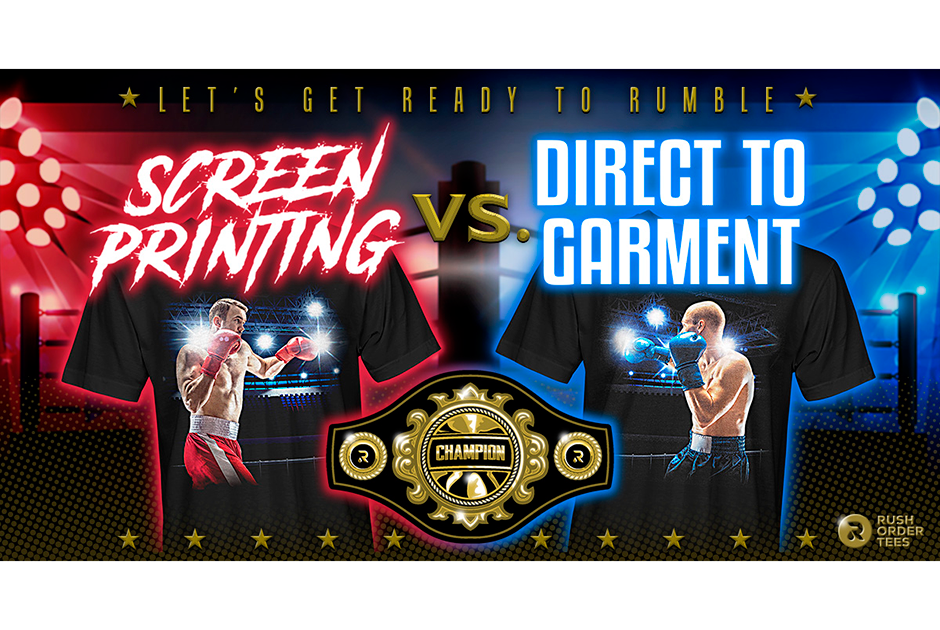Decorated-Apparel Transfer Printing with DTG
Today’s decorated-apparel professionals can dramatically expand their design and product offerings to include direct-to-film (DTF) with an existing direct-to-garment printer.
FULL STORY
Editor’s Note: This is the first in a three-part series exploring the differences between screen printing and direct-to-garment printing. This comparison is subjective and any judgment indicated is a matter of the author’s preference.
Philadelphia-based Rush Order Tees decided to put decorating techniques to the test in an ultimate comparison between screen printing and direct-to-garment (DTG) printing. As digital printing has gained popularity and affordability in recent years, the company decided to take a look at the frequently asked question: How does DTG printing stack up against traditional screen printing?
In order to answer, both methods were compared in the form of a 10-round “fight.” Each round covered a different facet of custom apparel printing, including vibrancy, color matching, durability, and more.
Rounds 1-3 are reviewed below.
Round One: Vibrancy
Traditional screen printing uses plastisol ink (composed of PVC particles suspended in a plasticizing emulsion), which are extremely opaque and come in a wide range of colors, while digital printing uses water-based inks, which lack the opacity and vibrancy of plastisol inks, especially on darker garments.
Even though DTG machines can provide a bright underbase (plastic particle pretreatment and titanium dioxide white ink) which improves the vibrancy, the final results are still lacking, compared to screen printing.
DTG relies on process printing, or the CMYK color model to make the various shades of color, which are bright and saturated, but also are semi-transparent. With screen printing’s use of Plastisol Inks, the most vibrant colors available tend to be outside the CMYK color gamut.
Round One pick: Screen Printing.
Round Two: Color Blending
DTG printers were made to color blend through creating smooth gradients and a range of colors by blending a lesser amount of colors. DTG works using process printing; the four CMYK colors blending to create a spectrum of colors, with little to no setup.
Screen printing uses the simulated-process technique by taking spot colors of Plastisol and creating a spectrum of colors; however, the setup involved makes it much less efficient, especially for smaller orders. With DTG, water-based inks are more transparent than plastisol, allowing the ink to overlap and blend together easier.
Round Two pick: Direct-To-Garment
Round Three: Color Matching
Rush Order Tees used the Pantone Matching System to duplicate colors, including those that are outside the CMYK range, super-saturated colors and specialty inks. Due to DTG’s underbase not being opaque enough, shirt color can bleed through, causing difficulty for matching.
Screen printing’s ability to print a range outside the gamut allows for a more precise color-matching process.
Round Three pick: Screen Printing
Imri Merritt has over ten years in the screen printing industry and works for Rush Order Tees.
Today’s decorated-apparel professionals can dramatically expand their design and product offerings to include direct-to-film (DTF) with an existing direct-to-garment printer.
FULL STORYThe past few years have brought changes to almost every industry, and decorated garment production is no exception.
FULL STORYNew Jersey-based Breakthrough Custom Clothing created “Warrior Princess” from scratch by digitally hand drawing the entire piece.
FULL STORY